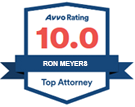Proving fault is a crucial part of any car accident claim. Whether you’re dealing with minor injuries or facing significant damages, establishing who was responsible for the accident is essential for securing the compensation you deserve. In Washington, the degree of fault assigned to each party directly affects the amount of compensation they can recover, making it critical to build a strong case from the outset.
In this blog, we’ll explore the legal strategies and types of evidence that can help prove fault in a car accident. From gathering evidence at the scene to leveraging expert testimony, this guide will help you understand the steps needed to navigate the complexities of your car accident claim.
Understanding Washington’s Fault Laws
Washington operates under a comparative negligence system, meaning that the fault in an accident can be shared among the parties involved. Under this system, your compensation is reduced by your percentage of fault. For example, if you’re found to be 20% at fault for the accident, your total compensation will be reduced by 20%.
Proving fault is critical not just for establishing liability but also for maximizing the amount of compensation you can recover. To do this, you’ll need to present compelling evidence that clearly shows the other party’s negligence or wrongdoing.
Key Legal Strategies for Proving Fault
Successfully proving fault involves a combination of gathering solid evidence, understanding relevant laws, and strategically presenting your case. Here are some key strategies to consider:
Gathering Evidence at the Scene
The evidence you collect immediately after the car accident can be invaluable in proving fault. If you’re physically able to do so, follow these steps:
- Take Photos and Videos: Document the accident scene from multiple angles, capturing vehicle damage, road conditions, traffic signs, and any other relevant details. Include photos of skid marks, debris, and anything else that might help establish what happened.
- Gather Witness Statements: If there are witnesses, ask for their contact information and a brief statement about what they saw. Witness testimony can provide an objective perspective on the accident.
- Document the Environment: Take note of weather conditions, lighting, and any potential hazards in the area. These factors can play a role in determining fault.
Using Police Reports
A police report is one of the most important documents in a car accident claim. When the police arrive at the scene, they will investigate the accident and file a report that includes their observations, statements from the parties involved, and sometimes their opinion on who was at fault.
- How to Obtain the Report: You can request a copy of the police report from the law enforcement agency that responded to the accident. Your attorney can also obtain this for you.
- Using the Report: The police report can serve as a key piece of evidence in your claim, especially if the officer’s findings support your version of events.
Leveraging Traffic Laws
Violations of traffic laws are often clear indicators of fault in a car accident. If the other driver violated a traffic law (e.g., running a red light, speeding, or failing to yield), this can be strong evidence of their negligence.
- Traffic Citations: If the other driver was cited for a traffic violation at the scene, this citation can be used as evidence to establish fault. Be sure to obtain a copy of any citations issued.
- Understanding Relevant Laws: Your attorney can help you understand how specific traffic laws apply to your case and how they can be used to support your claim.
Expert Testimony
In some cases, expert testimony may be necessary to prove fault. Experts can provide specialized knowledge that helps clarify complex aspects of the accident.
- Accident Reconstruction Experts: These professionals analyze the physical evidence, such as skid marks, vehicle damage, and road conditions, to recreate the sequence of events leading up to the accident. Their testimony can be crucial in cases where fault is disputed.
- Medical Experts: In cases where injuries are severe, medical experts can testify about the extent of your injuries and how they were caused by the accident. This can help connect your injuries directly to the crash, strengthening your claim.
Common Types of Evidence in Car Accident Claims
To build a strong case, you’ll need to gather various types of evidence that collectively support your claim. Here are some common types of evidence used in car accident cases:
Physical Evidence
Physical evidence from the accident scene can be powerful in proving fault. This includes:
- Vehicle Damage: The damage to your vehicle and the other vehicles involved can indicate the point of impact and the severity of the collision.
- Debris and Skid Marks: Skid marks and debris on the road can help determine how fast the vehicles were traveling and whether the drivers attempted to stop or swerve before the impact.
Medical Records
Your medical records are crucial for proving that your injuries were directly caused by the accident. Be sure to:
- Document All Treatment: Keep detailed records of all medical treatments, including emergency room visits, surgeries, physical therapy, and any ongoing care.
- Follow Medical Advice: Adhering to your doctor’s recommendations not only aids your recovery but also helps establish the seriousness of your injuries.
Eyewitness Testimony
Eyewitnesses can provide unbiased accounts of the car accident, which can be especially valuable if the other driver disputes your version of events. When gathering witness statements:
- Focus on Reliability: The credibility of the witness matters. Statements from individuals who have a clear view of the accident and no vested interest in the outcome are most effective.
- Collect Contact Information: Make sure you have the contact details of all witnesses so your attorney can follow up if necessary.
Surveillance and Dashcam Footage
Video evidence can be incredibly persuasive in proving fault. This might include:
- Surveillance Cameras: Check if there were any nearby traffic cameras, business security cameras, or residential cameras that may have captured the accident.
- Dashcam Footage: If you or the other driver had a dashcam, the footage could provide a clear view of what happened before, during, and after the crash.
Challenges in Proving Fault
Proving fault in a car accident isn’t always straightforward. There can be challenges, such as:
- Conflicting Accounts: When both parties offer different versions of events, it can be difficult to determine who is telling the truth.
- Lack of Evidence: If critical evidence, such as video footage or eyewitness testimony, is unavailable, it may be harder to prove fault.
- Shared Fault: In cases where both parties are partially at fault, determining the exact percentage of fault can be complicated and contentious.
These challenges underscore the importance of having an experienced attorney who can navigate these complexities, gather the necessary evidence, and build a compelling case on your behalf.
Why Choose Ron Meyers and Associates
At Ron Meyers and Associates, we understand the complexities involved in proving fault after a car accident. Our team is dedicated to helping clients in Olympia and throughout Western Washington navigate the legal process and secure the compensation they deserve.
With extensive experience in handling car accident cases, we know what it takes to gather and present the evidence needed to prove fault. We are committed to providing personalized attention and support, ensuring that your case is handled with the utmost care.
Take Action Today
Proving fault is a critical component of any car accident claim, and having the right legal strategy can make all the difference. If you or a loved one has been involved in a car accident, don’t wait to seek legal advice. Early action can help preserve evidence and strengthen your case.
Contact Ron Meyers and Associates today for a free consultation. Let us help you navigate this challenging time and work towards securing the compensation you deserve.





